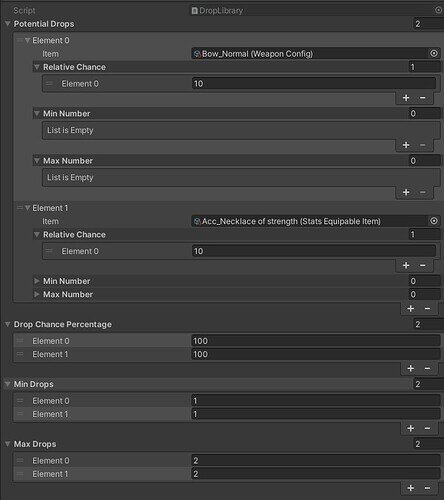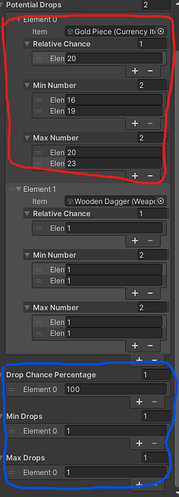The elements represent the value at each level. This lets you set different values for each level…
For example, in the beginning, you might want to drop a Rusty Sword of Adequate Sufficiency, as this is an expected drop from a level 1 character. So in the early levels (elements), you might set a high chance of getting this item… say 50 tickets, when everything else has 10 tickets…
But as you increase in level, players might not be as happy filling their inventory with beginner items, so you might have a Well Polished Sword of Improved Damage, which you probably don’t want the player to get early on in the game. So as you set things up for each level, you’re going to want to reduce the Rusty Sword value down to 1 chance or zero, and then increase the chance for the Well Polished sword, maybe even setting it at 0 for the first 5 levels, and then start adding chances there, so maybe by level 20, it’s 100 tickets.
On Non-stackable items (equipment!), I would always set the Minimum drop and Maximum Drop to 1 at every level. You don’t want to drop two Ragged Leather Jerkin of Barely Noticable Protection from the same enemy, as the enemy would likely only be wearing one such Jerkin. For stackable items (Potions!) you would start with 1 at each level and then increase the Max as the levels increase.



